Fantastic Voyage (1966) - Into the Bloodstream
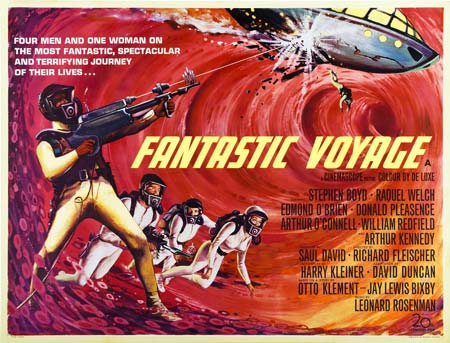
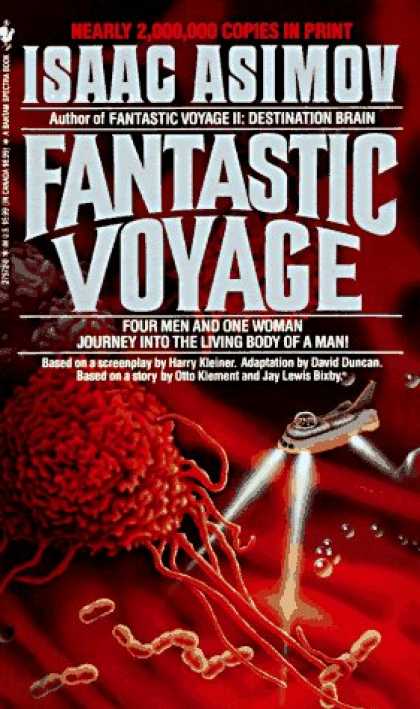
Fantastic Voyage (1966) was directed by Richard Fleischer and starred Stephen Boyd, Raquel Welch, Edmond O'Brien, Arthur Kennedy and Donald Pleasance. Sci-fi fans can be forgiven for assuming that the story originated in the fertile mind of author Isaac Asimov. The novel was released six months before the movie debuted in theaters and the book, which has sold over two million copies, trumpets Asimov’s name on the cover in type almost as big as the title. In fact, the legendary author of I, Robot and the Foundation series was brought in to pen the novelization of the film, a tie-in that would be used to stir up interest in the movie.
Well before Asimov’s book, however, there was a loose treatment that became the basis for screenwriter Harry Kleiner’s script about a team of miniaturized scientists who travel inside the body of a comatose colleague. Kleiner took an unusual approach to the job, setting aside the actual writing until he had gone back to school. He reasoned that for the film to be effective he’d need a working knowledge of the medical and scientific aspects of anatomy.
Enrolling at UCLA, he took an intensive three-week refresher course that gave him a working knowledge of the human body. He simultaneously wrote the script and a much longer reference guide, which, according to the movie’s press book, would be the filmmaker’s “road map for developing the film’s unique and breathtaking look inside the world of the human body.”
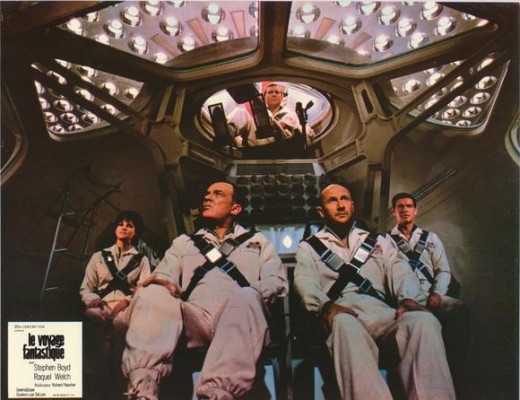
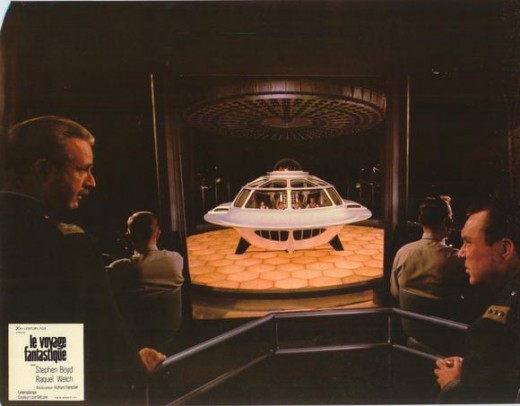
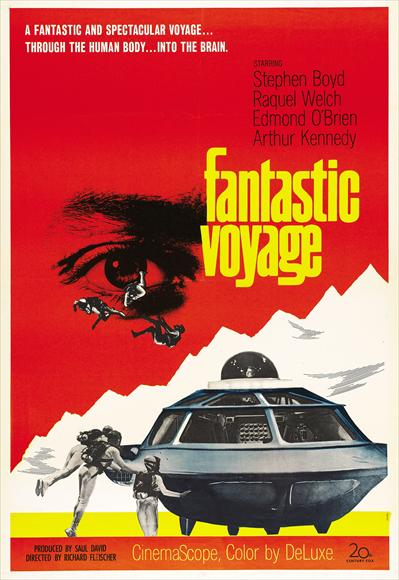
Grant: Wait a minute! They can't shrink me.
General Carter: Our miniaturizer can shrink anything.
Grant: But I don't want to be miniaturized!
General Carter: It's just for an hour.
Grant: Not even for a minute!
Kleiner crafted a story about scientist Jan Benes (Jean Del Val) a prominent scientist who, while working behind the Iron Curtain, discovered the secret of atomic miniaturization. The CIA helps him defect to the West, which naturally ticks off “the other side” who know how to miniaturize objects, but just can’t stabilize the process enough to make it practical. You see the discovery isn’t perfect—the shrinking method only works for 60 minutes — but further study has revealed a possible solution.
Benes has figured out the key to the process, but before he can implement this innovation an attempted assassination leaves him comatose with a dangerous blood clot in his brain. He’s the only one who knows how the new process works so it is imperative that he be saved. Trouble is, the clot cannot be removed through surgery. Having exhausted traditional medical treatments a team of bionauts, Charles Grant (Stephen Boyd), pilot Captain Bill Owens (William Redfield), Dr. Michaels (Donald Pleasence), surgeon Dr. Peter Duval (Arthur Kennedy) and his assistant Cora Peterson (RaquelWelch) board a submarine, the Proteus, which is then miniaturized to one micrometer in length and injected into Benes.
Their fantastic voyage has begun, but time is at a premium as they only have one hour to locate and neutralize the clot. As they wind their way through Benes’s heart, inner ear and the alveoli of the lungs to replenish their supply of oxygen they meet many obstacles. When it’s discovered that the surgical laser crucial to the rescue operation has been damaged it seems there might be a double agent on-board. By the time they reach the clot they have only six minutes to operate and exit the body.
Fantastic Voyage seems a little dated today, but in 1966 it was the most expensive science fiction film to date, featuring elaborate sets: The Miniaturization Center set alone took 50 builders 50 days to construct, for a total of 16,000 hours; scientifically accurate recreations of the internal pathways of the human body; and a giant lung (complete with nicotine stains!) made of fiberglass, poured latex and cement that measured 340,000 cubic feet.
Its look is retro-cool, with a visual interpretation that’s more lava lamp than hydrogen plasma, but those mind-boggling visuals are secondary to another aspect of the production that drew in a lot of teenage boys. No, it’s not the educational side of the movie, although that was one of the film’s selling points. It’s Raquel Welch, the spirited medical laser technician and the only woman aboard the Proteus.
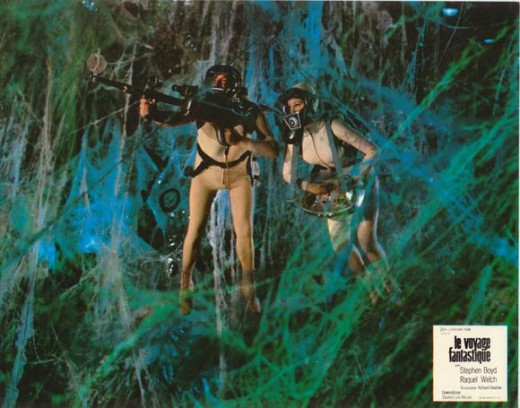

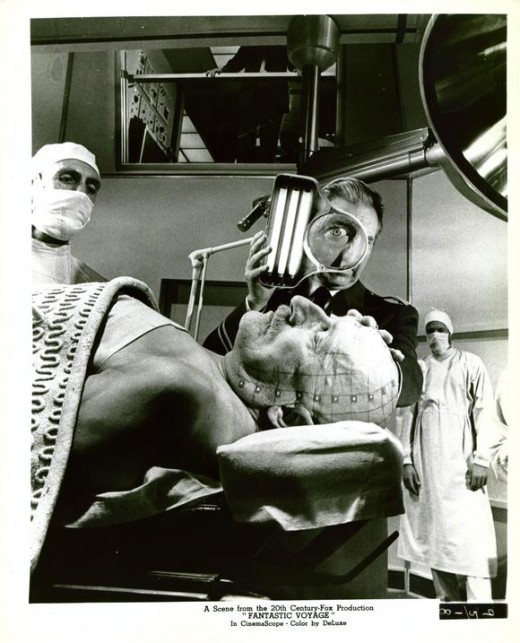

By 1966 Welch had appeared on many television shows, mostly in uncredited roles, but by the end of the year the one-two punch of One Million Years B.C., in which she played the fur-bikini clad cave woman Loana (one of the iconic pin-up posters of the decade), and in Fantastic Voyage wearing a form-fitting wetsuit and swimming in the blood stream, cemented her status as an international sex symbol.
The science of Fantastic Voyage, so carefully researched by Kleiner, doesn’t really hold up to scrutiny. The anatomy is spot on but there are logical flaws that don’t make scientific sense. Spoiler alert! After the crew makes their escape the Proteus and the saboteur’s body remain inside. Both have been altered—the submarine destroyed, the saboteur eaten by a white blood cell—but atoms from them are still inside Benes. Why wouldn’t those atoms expand and kill their host body?
For his part Asimov wrestled with the story’s scientific slip-up, correcting it by having the debris of the sub leave the body through a tear duct in the tie-in book and adding his own expertise to several other sequences, including the scene where the crew siphons off air from Benes’s lung. Asimov surmised that there would be no scientific basis for this procedure as the crew was miniaturized and the air would consist of regular sized molecules. He solved the problem by giving the crew a miniaturization device on-board the ship.
The film was nominated for five Academy Awards and won two – Art Direction and Visual Effects. Despite its leaps of logic and inaccuracies, Fantastic Voyage is a colourful and enjoyable time capsule from an era when anything seemed possible, whether it was miniaturization, the end of the Cold War, man on the moon or even Raquel Welch as a scientist.
In a similar vein the 1987 sci-fi comedy adventure InnerSpace was directed by Joe Dante and produced by Steven Spielberg, a miniaturised Dennis Quaid is injected into the unknowing Martin Short's buttocks. Meg Ryan and Kevin McCarthy co-starred.
A remake of Fantastic Voyage is in the works with James Cameron producing and Shawn Levy attached to direct.
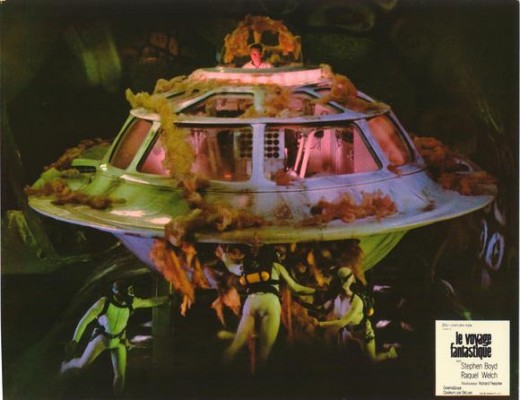
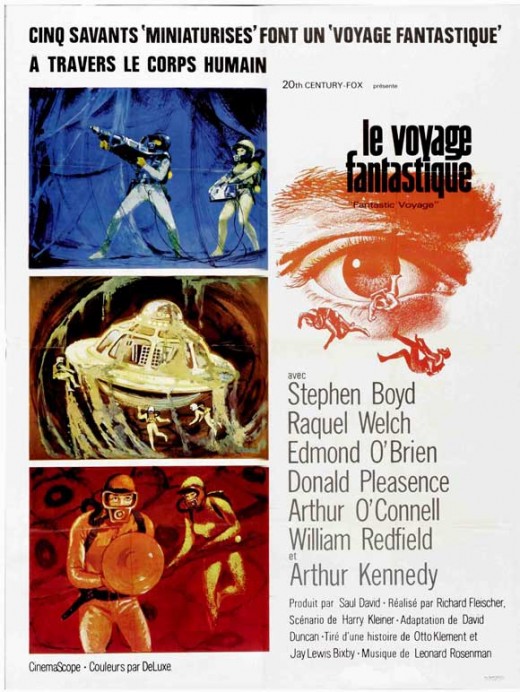

The Critics Wrote –
“Richard Fleischer’s fine direction maintains a zesty pace. Ernest Laszlo’s outstanding lensing brings out every lush facet in the superb production values.” (Variety)
"This is quite a film—the most colorful and imaginative since "Destination Moon." Harry Kleiner's screenplay and Richard Fleischer's direction combine to make it amusing and exciting, and the interior decorations have a bubbly, fantastic quality you won't find this side of Disneyland." (New York Times)
“It is a pity that the intellectual content never rises above Raquel Welch’s bustline or Stephen Boyd’s histrionic talents but at the very least physiology and trick photography provide some rip-roaring good fun.” (Judith Crist, NBC-TV Today)
“The script, alas, is pretty basic, expending half its eneergies on delivering a gee-whiz medical lecture, the other on whipping up suspense around the mysterious saboteur who lurks aboard (and is so sweatily shifty-eyed that there isn’t much mystery.” (Tom Milne, Time Out)
"The process shots are so clumsily matted... that the actors look as if a child has cut them out with blunt scissors." (Pauline Kael)



![Fantastic Voyage [Blu-ray]](https://m.media-amazon.com/images/I/41QeQhuTT3L._SL160_.jpg)



